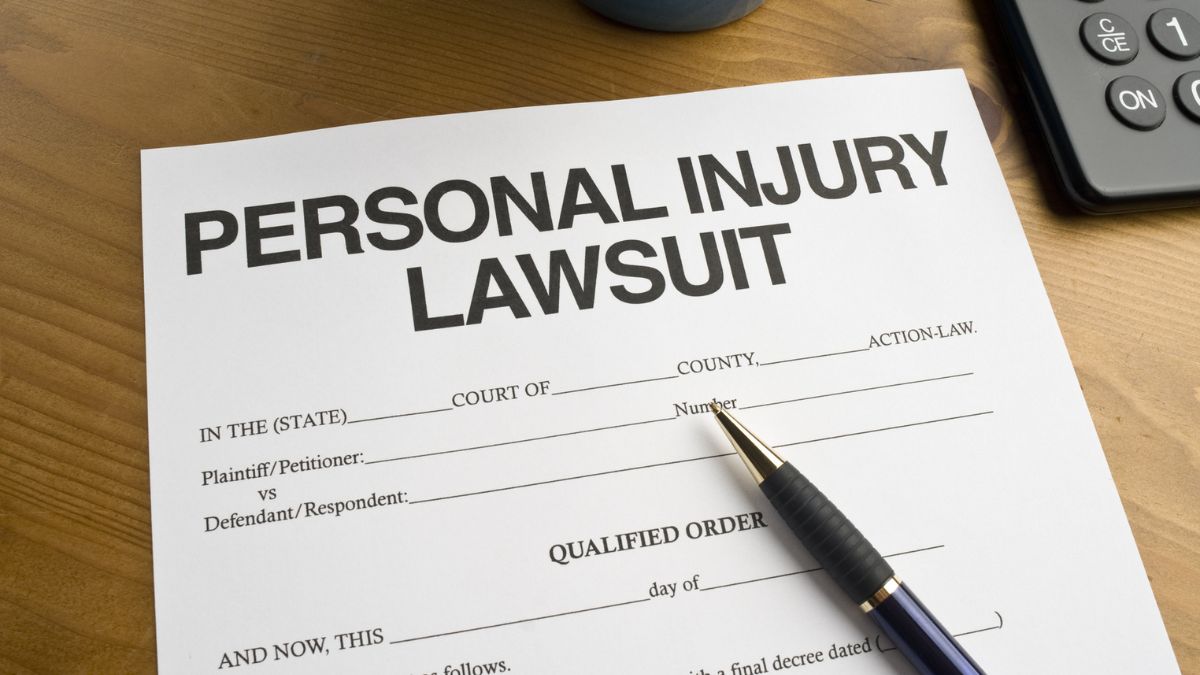TOPIC
Is it safe to drive in snow?

Driving in snowy conditions often raises concerns about safety on the roads. While it is possible to drive safely in snow with the right precautions and preparation, it requires a cautious approach and proper equipment. Drivers must be aware of the specific challenges that snow presents, such as reduced visibility and slippery surfaces.
 Understanding vehicle capabilities and road conditions is crucial. Using proper tires, maintaining a safe distance, and adjusting speed can make a significant difference. With the right knowledge and tools, individuals can navigate snowy roads more confidently.
Understanding vehicle capabilities and road conditions is crucial. Using proper tires, maintaining a safe distance, and adjusting speed can make a significant difference. With the right knowledge and tools, individuals can navigate snowy roads more confidently.
People often underestimate the risks associated with winter driving. Whether commuting to work or embarking on a longer journey, being informed about snow driving safety can help prevent accidents and ensure a safer experience.
Understanding Snowy Conditions and Driving Risks
Driving in snowy conditions presents unique challenges and risks that every driver should be aware of. Factors include the science behind snow accumulation on roads and the statistics surrounding snow-related accidents, both of which highlight the importance of caution and preparedness.
The Science of Snow and Its Effect on Roads
Snow forms through various atmospheric processes, creating flakes that accumulate and impact road surface conditions. When snow blankets a road, it reduces traction, making it harder for vehicles to grip the surface. The primary factor influencing driving safety is the density and moisture content of the snow.
Wet, heavy snow can create slushy conditions, while lighter, powdery snow can lead to drifting and poor visibility. Black ice, a thin layer of ice beneath the snow, can also pose significant dangers. Drivers often underestimate stopping distances as well, requiring up to 10 times longer to stop on snow-covered roads compared to dry pavement.
Statistics on Snow-Related Vehicle Accidents
Statistical data reveals concerning trends associated with snowy driving conditions. In the United States, approximately 1,300 deaths and 116,800 injuries occur annually due to winter weather-related crashes, according to the National Highway Traffic Safety Administration (NHTSA).
More than 70% of winter accidents happen on icy or snowy roads, with the majority of incidents occurring in rural areas. Legal assistance with car accidents may be necessary following such accidents to navigate the complexities of liability and insurance claims. Factors like failure to adjust driving speed and poor vehicle maintenance also contribute to these disturbing statistics, underscoring the need for proactive measures during winter weather.
Preparation and Precautions for Snow Driving
Taking the right steps before driving in snowy conditions can significantly enhance safety. Vehicle readiness and the inclusion of essential safety gear are critical components to ensure a smooth and secure journey.
Vehicle Readiness for Snowy Weather
Preparing a vehicle for snow driving involves several key checks. Firstly, tires should be winter-grade, with adequate tread depth to maintain traction. A quick inspection can reveal whether they are suitable for icy conditions.
Next, fluid levels must be appropriate. This includes antifreeze and windshield washer fluid rated for freezing temperatures.
Additionally, ensure that wipers are functioning correctly to improve visibility during snowstorms. Regular maintenance checks become crucial as well, focusing on brakes and battery life, which may suffer in colder weather.
Lastly, a full tank of gas is advisable, as it minimizes the risk of being stranded and provides extra weight for better traction.
Essential Safety Gear and Supplies
Equipping the vehicle with safety gear and supplies is vital for winter driving. An emergency kit should include items such as a flashlight, extra blankets, and non-perishable food items.
First aid kits are also important, ensuring basic medical needs are met. A shovel can be invaluable for freeing the vehicle if it becomes stuck.
Consider including flares or reflective triangles to increase visibility during roadside emergencies. Additionally, a bag of sand or cat litter can provide traction in slippery situations.
Finally, keep a charged phone and portable charger accessible to call for help if necessary. These preparations can make a difference in ensuring safety during snow driving.
Safe Driving Techniques in Snow
Driving in snowy conditions requires specific techniques to maintain control and ensure safety. By understanding how to manage a vehicle on slippery surfaces and navigate through heavy snowfall, drivers can reduce risks significantly.
Controlling Your Vehicle on Slippery Surfaces
Drivers should be aware that braking on snow can be drastically different from dry conditions. To maintain control, it is crucial to brake gently and leave ample space between vehicles.
- Increase following distance: Maintaining a distance of at least five to six seconds can provide enough time to react.
- Avoid sudden movements: Quick steering or aggressive braking can lead to loss of control.
Drivers should utilize low gears when going downhill. This helps with maintaining speed without relying solely on brakes, which can lock up and cause skidding. Anti-lock braking systems (ABS) should be engaged properly, allowing the driver to apply firm pressure while steering.
Navigating Through Heavy Snow and Poor Visibility
In heavy snow, visibility becomes a significant concern. Drivers should use low beam headlights to improve visibility, as high beams can reflect off falling snow and create a blinding effect.
- Slow down: Reducing speed is vital; drivers should adapt their speed to road conditions, even if it feels like they are moving too slowly.
- Utilize windshield wipers: Keeping windshield wipers in good condition ensures clear visibility. Use defrosters to prevent frost buildup.
If roads become impassable, drivers may need to seek alternate routes or avoid certain areas altogether. Using GPS with real-time traffic updates can help navigate around blocked roads or unexpected conditions caused by snow accumulation.
What to Do After a Snow-Related Car Accident
After a snow-related car accident, it is crucial to remain calm.
First, check for injuries. If anyone is hurt, call emergency services immediately.
Next, move to safety if possible. Turn on hazard lights and move vehicles out of traffic, if it’s safe to do so.
Document the scene. Take photos of the accident, vehicle positions, and road conditions. This evidence can be valuable later.
Exchange information with the other driver. Collect names, contact details, insurance information, and license plate numbers.
Inform the police. Even for minor accidents, having an official report is advisable for insurance claims.
Notify your insurance company. Report the accident as soon as possible. Provide them with information and documentation collected.
Consider seeking legal assistance. Consulting a lawyer can help navigate potential claims and understand rights regarding compensation.
Keep records. Document all expenses and communications related to the accident, including medical bills, repairs, and lost wages.
Be cautious about admitting fault. Take time to assess the situation fully before making statements that may affect liability.
Stay informed about local laws regarding accidents in snowy conditions to ensure compliance and proper procedures are followed.
TOPIC
What To Do If A Drunk Driver Causes A Fatal Accident

A fatal accident involving a drunk driver shatters lives. If you face this tragedy, knowing your next steps is crucial. This guide helps you navigate these challenging moments. First, ensure your safety and others around you. Contact emergency services immediately. Authorities need to secure the scene and gather evidence. Then, reach out to family or friends for emotional support. The impact of such an event can be overwhelming. Seek professional legal advice promptly. Legal experts can help you understand your rights and options. Their assistance may be vital in ensuring justice for your loved one. Document everything you remember about the incident. Details can be essential later. Also, consider seeking counseling. Emotional recovery is as important as legal resolution. Addressing these steps eases the burden during this difficult time. Being prepared supports you in handling this tragic situation with strength and clarity. You are not alone in this journey.
Immediate Steps After the Accident
Once the scene is secure, focus on gathering information. Collect the names and contact numbers of witnesses. Take photos of the accident site if possible. These will aid in building your case. Understandably, emotions run high. However, clear documentation is crucial. Law enforcement will compile a report. Request a copy for your records. This report contains essential details. It will be crucial for legal and insurance purposes.
Legal Considerations
Engaging with the legal system can be daunting. Yet, it is an important step forward. Secure a reputable attorney experienced in dealing with drunk driving incidents. They will navigate the complexities of the law on your behalf. Start this process early. Legal procedures often require extensive time and effort. The attorney will help file claims and represent you in court if necessary.
Emotional and Psychological Support
Processing grief and trauma requires time and support. Many find comfort in speaking with counselors or support groups. There are professionals trained to help you through this difficult period. Friends and family members are also invaluable. Be open about your needs and feelings. They can offer a listening ear and necessary support.
| Support Option | Advantages | Disadvantages |
| Professional Counseling | Expert guidance, Confidential | Costly, Requires scheduling |
| Support Groups | Shared experiences, Community support | Availability varies, Less personalized |
| Family and Friends | Immediate availability, Emotional bond | May lack expertise, Emotionally invested |
Financial and Insurance Matters
Accidents lead to unexpected financial burdens. Insurance claims need to be filed promptly. Contact your insurance company to start the process. Provide them with the accident report and any additional information. It is also wise to consult with your legal advisor during this stage. They can ensure all documents are appropriately handled. In some cases, the process may lead to compensation. This can aid with medical or funeral expenses.
Long-Term Recovery and Resolution
Healing from this tragedy takes time. Some days will be harder than others. Establishing a routine can help restore a sense of normalcy. Engage in activities that bring you relief and comfort. Consider joining initiatives that advocate against drunk driving. Contributing to a cause may offer a sense of purpose.
Additional Resources
For more guidance, visit the National Highway Traffic Safety Administration (NHTSA). They offer resources on dealing with drunk driving incidents. You can also explore the Mothers Against Drunk Driving (MADD) website for support networks and advocacy opportunities.
Dealing with the aftermath of a drunk driving accident is a profound challenge. Each step taken brings you closer to resolution and healing. Reliable support and information make a significant difference. Remember, while the journey is difficult, you have resources and people ready to help. By taking active steps, you honor the memory of your loved one and contribute to a safer community.
TOPIC
How To Prove Liability In A Las Vegas Personal Injury Lawsuit

When you’re injured in Las Vegas, proving who is responsible matters. Understanding how to prove liability is crucial. This guide breaks down what you need to know for a personal injury lawsuit. You might feel overwhelmed, but remember, you are not alone. Liability determines who pays for damages and injuries. You need evidence to show fault clearly. FriedmanInjuryLaw offers support in gathering this evidence. First, you need to collect reports and witness accounts. Second, document medical records and expenses. Finally, maintain communication records with all involved parties. Each step helps reinforce your case. It’s essential to stay focused and organized. Legal processes may seem daunting, but staying informed helps you reclaim control. Everyone deserves justice and the means to heal. You can navigate this challenge with careful preparation and support. This blog offers insights to help you through each stage of the process. You hold the key to your case’s success.
Gathering Evidence
Evidence is the backbone of your case. To prove liability, compile detailed information about the incident. Start with the police report. This document provides an official account of the event. Witness statements strengthen your case. They offer unbiased perspectives on what happened. Photos of the accident scene can capture crucial details. Visual evidence can clarify how events unfolded.
Medical Documentation
Your injuries are a critical part of the evidence. Medical records document the extent and impact of your injuries. They connect your injuries to the incident. Keep all medical bills and related expenses. This information supports claims for financial compensation.
Communication Records
Keep a detailed log of all communications. This includes interactions with insurance companies and other parties. Emails, letters, and phone call notes can reveal valuable information. They can show offers, admissions, or statements that affect responsibility.
Types of Liability
Understanding liability types helps you build a stronger case. Here are common types:
- Negligence: Failing to act with reasonable care.
- Strict Liability: Responsibility without proof of fault, common in product liability cases.
- Intentional Wrongdoing: Harm caused on purpose.
Comparative Negligence in Nevada
Nevada follows a comparative negligence rule. If you share some fault, it affects your compensation. For example, if you are 20% at fault, your damages reduce by 20%. Understanding this rule is vital for realistic expectations.
Comparison Table: Types of Liability
| Type | Description | Proof Required |
| Negligence | Lack of reasonable care | Prove negligence elements |
| Strict Liability | Liability without fault | Show defect and harm |
| Intentional Wrongdoing | Harm by deliberate action | Prove intent |
Legal Support and Resources
Pursuing a lawsuit is complex. Legal assistance can guide you. Experienced attorneys know the process well. They can help you build your case effectively. USA.gov offers resources for finding legal aid in Nevada.
Conclusion
Proving liability in a personal injury lawsuit requires diligence and determination. By gathering comprehensive evidence, documenting medical details, and understanding liability types, you can build a compelling case. Resources like LawHelp.org provide valuable information for those seeking legal guidance. Stay organized and informed throughout the process. With careful preparation and support, you can achieve the justice you deserve.
TOPIC
How Permanent Disability Is Calculated In California

Understanding how permanent disability is calculated in California is crucial for those who need it. You face challenges daily. The calculation process is straightforward yet significant in determining benefits. It involves specific steps that ensure fairness and accuracy. The state uses guidelines to measure the extent of disability, which affects your work capacity. First, a medical evaluation assesses your condition. Then, a percentage is assigned, reflecting your lost earning capacity. This is not just a number; it impacts your financial stability. Stay informed and seek advice when necessary. California considers various factors, including age and occupation, in these calculations. You can find more detailed information and resources at hinden.net. This platform helps you in navigating this complex subject. Remember, understanding your entitlements brings clarity and peace of mind. Knowing these steps ensures that you receive the support you deserve, empowering you in your recovery journey.
Steps in the Calculation Process
The process begins with a medical assessment. A doctor will evaluate your condition and provide a report. This report includes an impairment rating, a crucial part of the calculation. The impairment rating is expressed as a percentage, indicating how much your disability affects your ability to work. It is essential to have a detailed and accurate medical report.
Once the impairment rating is determined, it is used to calculate the permanent disability percentage. This percentage reflects the reduction in your earning capacity due to the injury. California has a defined schedule that helps translate the impairment rating into a permanent disability percentage.
Factors Affecting the Calculation
The calculation considers several factors. These include your age at the time of the injury and your occupation. Older workers or those in more physically demanding jobs might receive a higher disability rating. This reflects the greater impact of the injury on their ability to work.
Additionally, any pre-existing conditions or prior disabilities are considered. These can influence the final determination of your permanent disability rating. A thorough evaluation of all these factors ensures a fair and accurate calculation.
Understanding the Benefits
Once the permanent disability percentage is calculated, the next step is determining benefits. The benefits are paid out over time and are designed to replace lost income. The amount depends on the disability percentage and your pre-injury wages. You can find useful guidance on how benefits are structured at the California Department of Industrial Relations.
The benefits provide financial support to help cover living expenses and other costs associated with your disability. Understanding the calculation and benefits helps you plan for the future and manage your finances effectively.
Comparison Table of Permanent Disability Benefits
| Disability Percentage | Weekly Benefits | Duration (Weeks) |
| 1-69% | $160 | 3-475 |
| 70-99% | $290 | Until age 67 |
| 100% | Full wage replacement | Lifetime |
Seek Professional Guidance
Given the complexity of the calculations and the impact on your life, seeking professional guidance is wise. Legal professionals specializing in workers’ compensation can provide valuable insights and help you navigate the process. They ensure that your case is accurately evaluated and that you receive the benefits you deserve.
Moreover, staying informed about updates or changes in the law is essential. The California Division of Workers’ Compensation offers resources and updates that can keep you informed.
Conclusion
Understanding how permanent disability is calculated in California empowers you. It helps ensure you receive the benefits you are entitled to. By comprehending the steps, recognizing the factors involved, and seeking guidance, you secure your financial stability. This process provides peace of mind, allowing you to focus on recovery and future goals. With the right information and support, you manage the challenges of disability more effectively, ensuring a hopeful path forward.
-

 BLOG1 month ago
BLOG1 month agoIZoneMedia360 .Com: Exploring the Features and Benefits
-

 BLOG5 months ago
BLOG5 months agoAbout Blog TurboGeekOrg: A Go-To Hub for Tech Enthusiasts and Latest Innovations
-

 BLOG5 months ago
BLOG5 months agoWhat is a Golden Transit in Magi Astrology?
-

 BLOG1 month ago
BLOG1 month agoA Complete Guide to ProcurementNation.com Shipping
-

 ENTERTAINMENT5 months ago
ENTERTAINMENT5 months agoTyquaez Pickett: A Rising Star in the Entertainment World
-

 NEWS1 month ago
NEWS1 month agoChloe Berger News: Insights on Employee Rights and Talent Retention
-

 HOME1 month ago
HOME1 month ago5StarsStocks.com Nickel: Invest for a Bright Future
-

 BLOG4 months ago
BLOG4 months agoWho Is Hall Sinclair? The True Story of Olivia Colman’s Son
